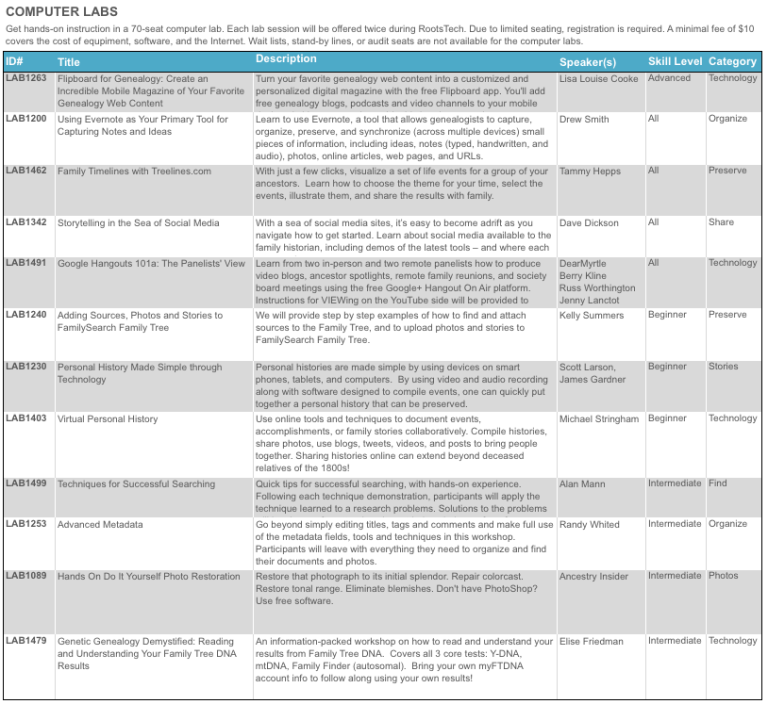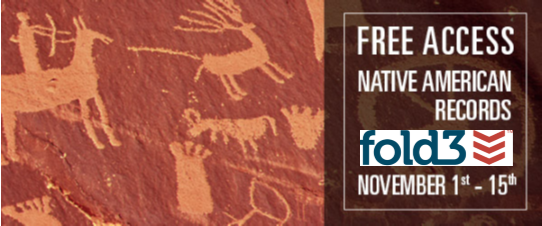by Lisa Cooke | Nov 19, 2013 | 01 What's New, Ancestry, Census, Family History Podcast, Findmypast, Irish, Records & databases, Research Skills, Technology
 Originally published Fall 2008
Originally published Fall 2008
Republished November 19, 2013
by Lisa Louise Cooke
[display_podcast]
Download the Show Notes for this Episode
Welcome to this step-by-step series for beginning genealogists—and more experienced ones who want to brush up or learn something new. I first ran this series in 2008. So many people have asked about it, I’m bringing it back in weekly segments.
Episode 7: Best Subscription Websites for Genealogy Research, Part 1
In our first segment, my guest is Lisa Alzo, popular genealogy lecturer and writer (now the author of nine books and online genealogy instructor at Family Tree University and the National Institute for Genealogical Studies). We talk about her reasons for researching her family history and what she’s learned in her genealogical journeys (which include international travel in Eastern Europe).
In the second half of the show, we tackle an essential topic: the best subscription sites for family history records. This is a two-part topic: in this episode I talk about the best genealogy websites that require payment to access their core content. In Episode 8, we’ll talk about the fantastic free websites that are out there.
Keep in mind that this episode was recorded a few years ago. As I mention in the show, the online records landscape is constantly changing. Here are a few updates:
- The biggest powerhouse paid subscription website is still Ancestry: it’s just bigger and better than what I originally described. As of fall 2013, they host 11 billion historical records. Member-contributed items include over 50 million family trees and 160 million uploads of photographs, stories and scanned documents. They still have a free 14-day trial membership and multiple subscription options: check out current ones here.
- WorldVitalRecords is still a great website, though it’s grown more slowly. At our republishing date, it boasts over 158 million digitized images, (including US and UK censuses); 300 million names from vital records; 75 million names from military records, over 100 million pages of newspapers dating from 1739; 1.5 million historical maps; 8000 yearbooks and over 30 million tombstone photos. WorldVitalRecords is now part of the MyHeritage.com family of websites. Click here for a free 3-day trial membership.
- Findmypast now has two web storefronts: findmypast.com (recommended for folks in the U.S.) and FindMyPast.co.uk (which specializes in British and Irish roots and records). At last glance in fall 2013, findmypast hosts over 1.5 million family history records. It offers great search options and a budget-friendly pay-per-view model or a more traditional subscription.
- RootsIreland is now home now to over 20 million Irish records.
- Genline.com for Swedish research is still online, though it’s part of Ancestry.com now. It’s home to over 20 million church record images and more.
- Scotland’s People is still your official home for online Scottish records, including an enormous collection of parish records with births and baptisms, banns and marriages and deaths and burials.
- Many other sites support specific topics in genealogy research. An example on my side of the pond is Fold3 (formerly Footnote) for American military records. This site is home to over 400 million total records from the Revolutionary War era forward. Check with others who research families from the same location or ethnic background as your family to see what sites would be perfect for you.
Links
Ancestry
Findmypast.com
Findmypast.uk.com
Fold3
WorldVitalRecords
My website mentioned in the podcast, GenealogyGems.tv, is now better known as www.genealogygems.com. The Genealogy Gems newsletter mentioned in the episode is now my blog, which you can find on my website.
by Lisa Cooke | Oct 17, 2013 | 01 What's New, Conferences, FamilySearch, Flipboard, RootsTech
 Have I got a promo code for you!
Have I got a promo code for you!
Want to save off your registration for what’s shaping up to be one of the biggest family history events ever? Of course you do!
From now until November 30, 2013, Genealogy Gems blog readers can save an additional $10 off the already discounted early registration price for RootsTech 2014, happening February 6-8 in Salt Lake City. The promo code is RT14LTO by November 30.
#RootsTech promises to be a spectacular learning event, with over 200 classes and a dozen hands-on labs taught by knowledgeable experts, special lunchtime and evening events and more. Before January 6, you can get a full-access pass for just $159, an $80 savings off the full price of $239. But again, register before November 30 with the promo code above and you’ll only pay $149.
The full schedule of classes will be available when the app comes out in November, but RootsTech has posted the computer lab schedule. These labs were incredibly popular last year. They sold out fast and had to add more! Your early registration gives you dibs on labs like these, including my own class on Flipboard:

by Lisa Cooke | Aug 30, 2013 | 01 What's New, Ancestry, MyHeritage, Records & databases
It’s a holiday weekend, so you know what that means? Genealogy record websites that are usually only available by paid subscription open up some of their collections for free. Here’s where you can get access to family history resources this weekend:
subscription open up some of their collections for free. Here’s where you can get access to family history resources this weekend:
MyHeritage
providing free access – from August 31 through September 2, 2013 – to all US Census records.
Click here to Search Now
Ancestry
providing free access to its collection of Immigration and Travel records through Labor Day including:
- passenger lists
- passports
- border-crossing records
- citizenship and naturalization records
Requires a free Ancestry.com account Click here to Search Now
by Lisa Cooke | Jul 20, 2013 | 01 What's New, Ancestry, Military, Records & databases, Technology
Now when you discover an ancestor’s record on Fold3.com, you can save it to your online tree at Ancestry.com.
According to Fold3.com’s press release: “Whenever you see a green ‘Save to Ancestry’ button above a document or on a Fold3 memorial page, you can link that document or page directly to someone’s profile on Ancestry.”
“You’ll be asked to log into your Ancestry.com account, and then you’ll see a drop-down list of your trees. Locate the tree you wish to save the document to, begin typing the name of the person to whom the record should be attached, choose the correct name from the list that appears, and then press save.”
Watch a tutorial video to learn more and see how it’s done.
by Lisa Cooke | Jun 29, 2013 | 01 What's New, Ancestry
 As I mentioned in Genealogy Gems Podcast episode 156 Ancestry is working on some new enhancements to the website’s search function. What I didn’t say then, but what has been officially announced now, is that “Old Search” is being phased out. More specifically, the best parts of it are being consolidated into the current search so that we are all on the same page with one search tool.
As I mentioned in Genealogy Gems Podcast episode 156 Ancestry is working on some new enhancements to the website’s search function. What I didn’t say then, but what has been officially announced now, is that “Old Search” is being phased out. More specifically, the best parts of it are being consolidated into the current search so that we are all on the same page with one search tool.
In episode 156 I also talked about technological “mayhem.” The chaos that follows changes made by technology companies to their products. If you felt your blood pressure start to rise at the news that Old Search is on it’s last leg, I encourage you to take a listen to that episode for a fresh perspective on the effects of change.
According to Ancestry this change impacts a small percentage of users. (Although from past changes in the genealogy community it’s clear that small groups can have big voices!) Are you one of those users in the 2% who still relies on Old Search? Do you consider this change another in a long line of “technological mayhem” or do you welcome the evolution of Ancestry’s search function? Read the following announcement from Ancestry (note that the bolding of the last paragraph is mine – I think it is key) and leave your comments below.
“Ancestry.com is continuing our efforts to improve the search experience across Ancestry.com and will be making changes to our search functionality in the upcoming months. Some features will be added and some will be discontinued. As part of the 2% of our subscribers that use the old search function on the site, we know that you are passionate about the search experience on Ancestry.com and we are reaching out to you to get input on potential improvements. We hope you will take the opportunity to share your insights and feedback on our plans.
To identify which areas of the experience we should focus on this year, we have drawn on customer input, usage data, usage patterns and our old search function for inspiration. From all of that, we are looking at making your time on Ancestry.com more productive by improving these areas of the search experience in 2013:
- More relevant search results with the best results at the top
- Easier refining and control of your search results
- Keeping a better history of the work you have done
- Publishing more new content and more corrections to existing content
- Performance improvements to return results faster
As we begin to make these improvements, we will no longer maintain two separate search systems for the site. Maintaining two systems limits the resources we can use to make improvements and increases the complexity of every improvement we try to make. Additionally, continuing to maintain the two systems limits our ability to direct more investment into other areas like adding more record collections and correcting existing collections.
Based on that, as a part of the work this year we will be bringing together the two search experiences into a single search experience on Ancestry.com. We hope to bring forward the best features of both the old and new search systems into the consolidated experience to facilitate the transition for our users and to improve the overall search experience. We expect to discontinue the old search function as a separate experience within the next 6 months.”
After the initial uproar online about the changes mentioned above, Ancestry reached out again to emphasize their desire to get user’s feedback. You can take the survey here: http://ancestry.qualtrics.com/SE/?SID=SV_8ubNXU8IiQcxqVD
According to Ancestry, many of the recent concerns and comments have cited functionality that actually exists in current search, as well as in old search – specifically:
- Ancestry’s current search experience allows users to view search results as a list of ranked records or as a consolidated list of categories.
- The current search experience allows users to do “Exact Match” searches.
- The current search experience allows users to specify a “Collection Priority” to filter results by country.
Crista Cowan has put together an educational video which demonstrates this functionality in the current search experience:
Ancestry also has an article which does a side-by-side explanation of how to achieve the same types of results with the current search as in Old Search: http://ancestry.custhelp.com/app/answers/detail/a_id/5569/kw/old
Page 10 of 14« First«...89101112...»Last »
 Originally published Fall 2008
Originally published Fall 2008








